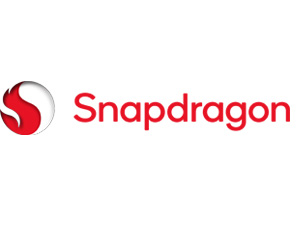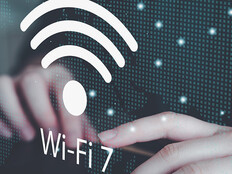Healthcare’s digital transformation efforts rely on the potential for data and artificial intelligence to improve clinical outcomes. To effectively use this technology at the point of care, however, clinical staff need devices capable of running powerful AI applications and maintaining constant, secure connectivity — all without overheating or requiring a midshift battery recharge.
Qualcomm Technologies is focusing its efforts on addressing these unique needs. By equipping devices with system-on-a-chip capabilities and 5G connectivity, Qualcomm is working to give clinicians the same user experience on the job that they’ve come to expect from personal devices.
“We’re taking the technology we’ve developed for smartphones and embedding it into computers and other devices,” says Emily Engel, enterprise regional director of sales at Qualcomm. “When you’re not worried about dropping a video call with a patient or getting hacked, just imagine how much more productive you can be.”
DISCOVER: Qualcomm Technologies’ Snapdragon processors enable healthcare mobility.
High-Performance Connected Devices Give Clinicians Access to AI
Engel highlights three benefits to this approach to powering and connecting devices.
Connectivity: Healthcare workers benefit from using devices that establish 5G connections to the internet, Engel notes. Hospitals are notorious for Wi-Fi dead spots, whether it’s in elevators or near the radiology department’s thick walls. This is especially true in older buildings constructed with stone, brick and plaster walls. But 5G can enable a “consistent, strong network” for tablets, laptops and the hospital’s many monitoring devices, Engel says.
These benefits extend to workers beyond the hospital. Visiting nurses don’t have to rely on the Wi-Fi connection in a satellite clinic or a patient’s home. It’s also faster to make a 5G connection than it is to find and log on to a secure Wi-Fi network — and workers don’t have to roll the dice with an nonsecure connection.
Performance: Qualcomm’s latest devices run Windows on Snapdragon system-on-a-chip processors. “There’s no need for a motherboard,” Engel says. As a result, devices run using less power. Laptop batteries last longer and devices don’t run as hot.
Such performance improvements and secure connectivity let visiting nurses and other clinicians in the field travel with a single computing device. Instead of taking notes on a “companion” tablet or smartphone during a visit and then transferring their notes to their laptop after hours, nurses can save time by using their laptop during the visit. “It’s a powerful experience,” Engel says.
Native AI: Powered by solutions from Qualcomm, devices come with a range of native AI applications, including apps that suppress background noise during video calls and others that transcribe calls. Organizations deploying Qualcomm devices can also load their own native AI apps.
Having AI on the device is “huge,” says Engel. In addition, running queries locally means a device isn’t having to connect to cloud-based services, which is critical for real-time decision support; users can even run multiple AI experiences concurrently, Engel says. It also reduces the administrative overhead and cost of managing cloud configurations for end users and devices.
Click the banner below to optimize healthcare networks for the latest in care delivery.
Thoughtful Policies Can Ensure That AI Is Used Responsibly
As healthcare organizations embark on digital transformation, Engel cites three factors to consider.
Governance: Putting AI into the hands of more healthcare professionals can improve efficiency and add value, but organizations need to be thoughtful in their use of the emerging technology. AI algorithms are only as good as the data sets they’re trained on. That’s why AI governance is top of mind in Engel’s conversations with CIOs.
As healthcare leaders look closely at how their organizations develop AI models, they’re also considering what types of responses these models produce and how clinical staff use the information a model provides. This allows for further fine-tuning of their models, Engel explains.
Training: It’s essential for technology leaders to reassure clinicians that AI is there to augment the work they do, not to replace them. “AI can vet an imaging scan initially, but the doctor still needs to review the scan,” Engel notes. “There’s a level of expertise the practitioner has that the machine doesn’t.”
Education starts with showing staff how to use AI effectively; for example, by learning how to write prompts. The more clinicians know how AI works, the more likely they are to use it responsibly, Engel adds. This increases the odds that they will benefit from AI and, as a result, continue to use it.
Needs assessment: Across industries, executives are still deciding where and when to use AI. Engel says there’s no “coveted list” of use cases that broadly apply, especially because new AI-driven applications are released seemingly every day. Each healthcare organization needs to decide for itself based on factors such as compliance requirements, the willingness of clinical staff to embrace digital transformation, and the capacity of IT teams to manage AI applications and the devices running them.
The key question when testing AI applications across different user groups, according to Engel: “How do you make this effective at scale?”
Brought to you by:













